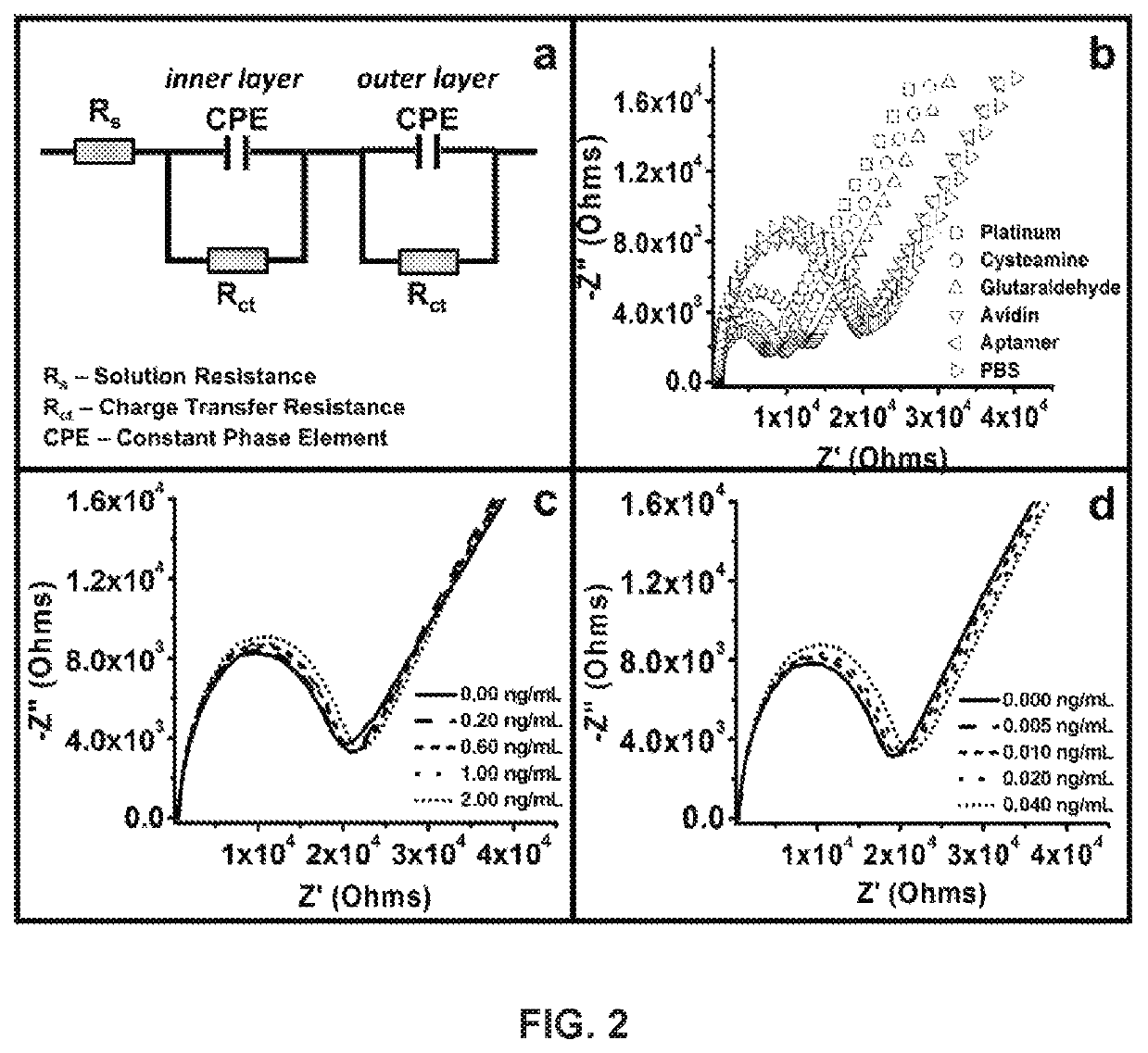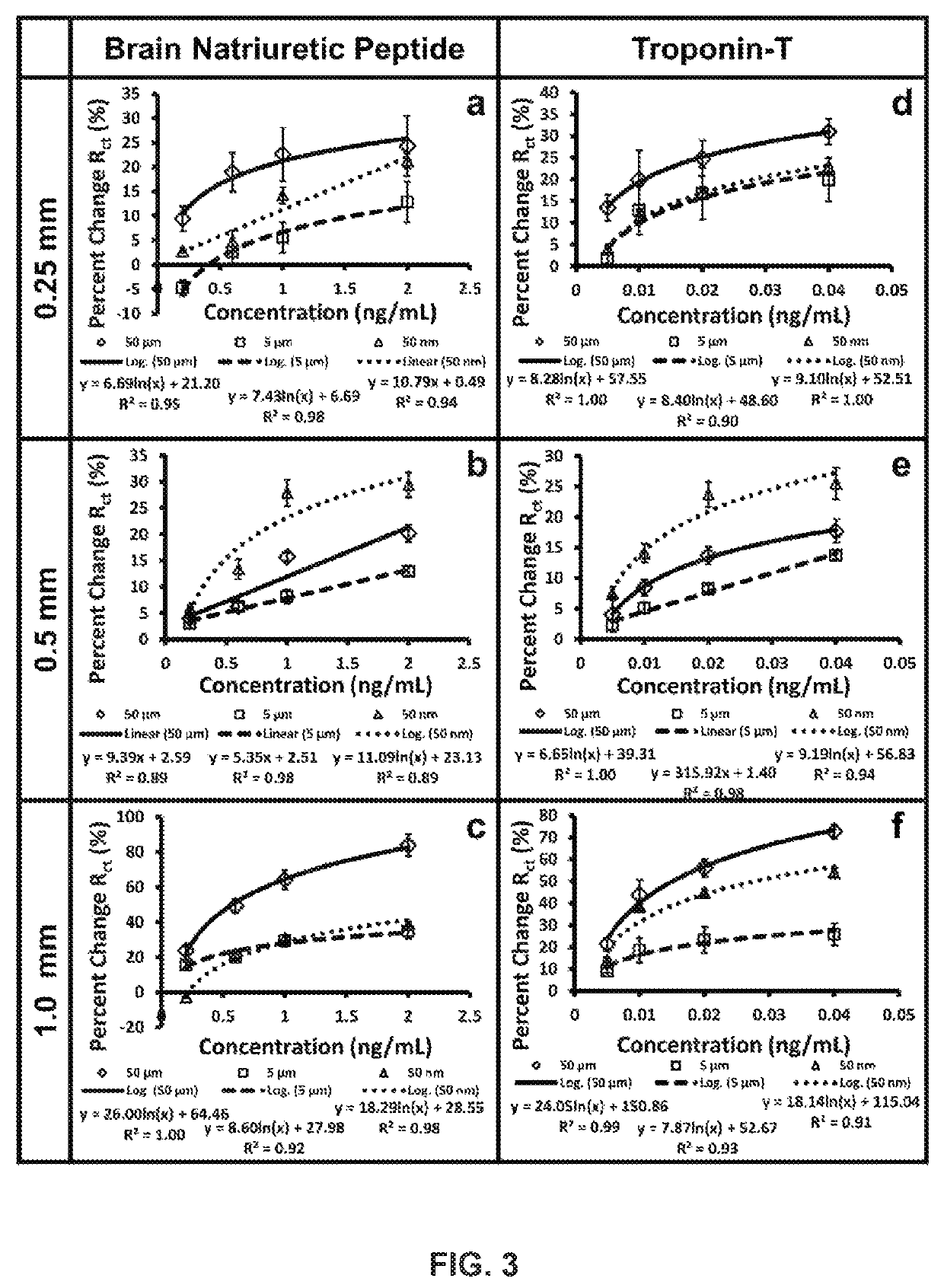Development and parameter assessment for vertically aligned platinum wire aptasensor arrays for impedimetric detection of cardiac biomarkers
a technology of impedimetric detection and platinum wire aptasensors, which is applied in the direction of material analysis, biological material analysis, instruments, etc., can solve the problems of cardiac failure, stroke, and possible death, prevalence and cost of cvds are projected to continue to increase over the years, and electrocardiography results are not always reliabl
- Summary
- Abstract
- Description
- Claims
- Application Information
AI Technical Summary
Benefits of technology
Problems solved by technology
Method used
Image
Examples
examples
[0052]In accordance with the invention, impedimetric vertically-aligned platinum wire-based aptasensors for the detection of cardiac markers BNP and TnT were developed and parameter assessment (specifically, diameter of wire and surface polishing) was conducted. Upright platinum wires of varying diameters were cast in epoxy such that one end was utilized for functionalization and the other end was used to establish electrical connection. The resulting platinum electrodes were accordingly polished to various different grits, functionalized to bind the BNP and TnT-specific aptamers to the surface, and tested against various clinically relevant concentrations of BNP and TnT to determine the ideal parameters (wire diameter and polishing grit) for biosensor and medical device development.
1. Example
[0053]Three surface polishes (50 μm, 5 μm, 50 nm) and three platinum wire diameters (0.25 mm, 0.5 mm, and 1.0 mm) were characterized, functionalized, and then tested against clinically relevant...
PUM
| Property | Measurement | Unit |
|---|---|---|
| diameter | aaaaa | aaaaa |
| diameter | aaaaa | aaaaa |
| diameter | aaaaa | aaaaa |
Abstract
Description
Claims
Application Information
 Login to View More
Login to View More - R&D
- Intellectual Property
- Life Sciences
- Materials
- Tech Scout
- Unparalleled Data Quality
- Higher Quality Content
- 60% Fewer Hallucinations
Browse by: Latest US Patents, China's latest patents, Technical Efficacy Thesaurus, Application Domain, Technology Topic, Popular Technical Reports.
© 2025 PatSnap. All rights reserved.Legal|Privacy policy|Modern Slavery Act Transparency Statement|Sitemap|About US| Contact US: help@patsnap.com



